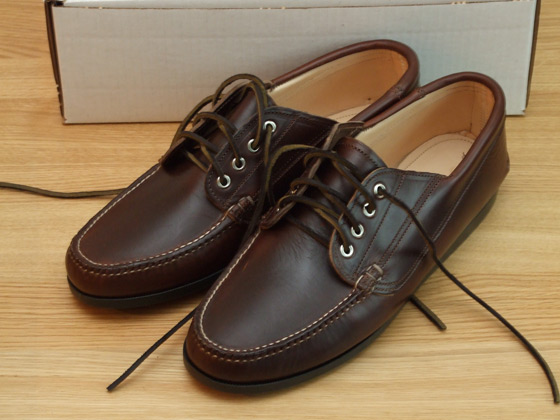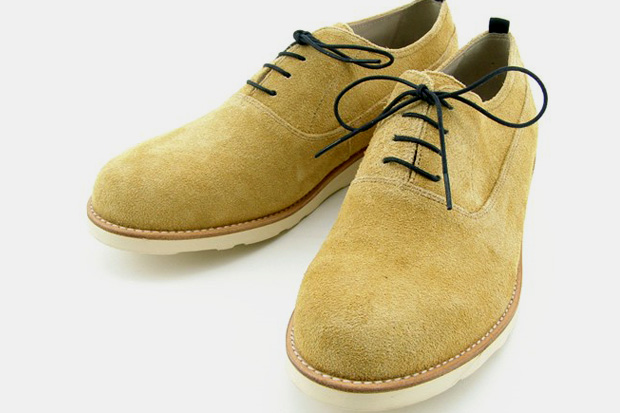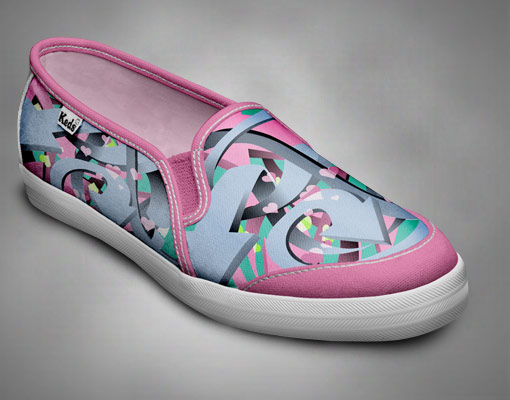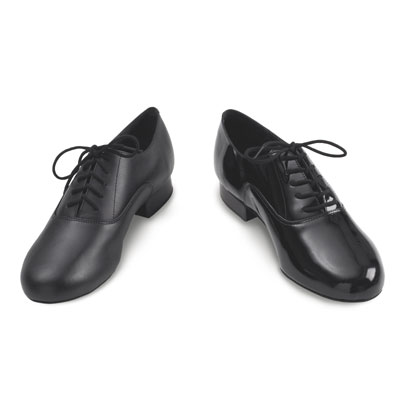Have you seen or do you own each and every pair of shoe possible?
Lets have a look at the different types..
FIRST SOME HISTORY!
There is much evidence that a foot covering was one of the first things made by our primitive ancestors. Necessity compelled them to invent some method of protecting their feet from the jagged rocks, burning sands, and rugged terrain over which they ranged in pursuit of food and shelter.
The history of human development shows that the importance of protecting the foot was early recognized. Records of the Egyptians, the Chinese and other early civilizations all contain references to shoes. The shoe is repeatedly mentioned in the Bible and the Hebrews used it in several instances with a legal significance, notably in binding a bargain.
The history of human development shows that the importance of protecting the foot was early recognized. Records of the Egyptians, the Chinese and other early civilizations all contain references to shoes. The shoe is repeatedly mentioned in the Bible and the Hebrews used it in several instances with a legal significance, notably in binding a bargain.
 Shoes of one sort or another are rich in legend and figure conspicuously in the folklore of different races. The shoe, even up to the present time, continues to figure in those stories, which have come down to us. The stories of the wonderful Seven League Boots, Mercury's Winged Sandals, Puss in Boots, Cinderella, and others, all existed in some ancient and often nearly forgotten tongue, but are still well known to all children. The custom of throwing the shoe after the newly wedded couple is but one of the many instances in which the shoe, when used according to formula, was supposed to bring luck.
Shoes of one sort or another are rich in legend and figure conspicuously in the folklore of different races. The shoe, even up to the present time, continues to figure in those stories, which have come down to us. The stories of the wonderful Seven League Boots, Mercury's Winged Sandals, Puss in Boots, Cinderella, and others, all existed in some ancient and often nearly forgotten tongue, but are still well known to all children. The custom of throwing the shoe after the newly wedded couple is but one of the many instances in which the shoe, when used according to formula, was supposed to bring luck. In its first form the shoe was just a simple piece of plaited grass or rawhide which was strapped to the feet. Among the relics of early Egyptians are some sandals made from plaited papyrus leaves, beautifully and artistically wrought. Records show that sandalmaking had become a well-recognized art early in the history of that country.
In its first form the shoe was just a simple piece of plaited grass or rawhide which was strapped to the feet. Among the relics of early Egyptians are some sandals made from plaited papyrus leaves, beautifully and artistically wrought. Records show that sandalmaking had become a well-recognized art early in the history of that country.
The sandal still is the most generally worn type of footwear in many warm countries. In form and ornamentation it reflects the environment in which it was worn, together with the artistic tastes of the peoples. In some countries the sandal continues to be the same simple kind worn since the dawn of history, while in others the multiple form of the straps and beautiful decorative work reflect the artistry, progress and prosperity of the wearers.
 The Japanese, long a sandal wearing people indicated the social status of the wearer by making distinctive sandals for the Imperial Household, merchants and actors, in fact, for the whole range of vocations and professions.
The Japanese, long a sandal wearing people indicated the social status of the wearer by making distinctive sandals for the Imperial Household, merchants and actors, in fact, for the whole range of vocations and professions.The Greeks emphasized design and beauty, while the Romans devised a military type of sandal that enabled their legions to travel on foot throughout the then known world. In the more luxurious days of the late Empire the sandals were often beautifully wrought with ornaments of gold and precious stones.
 The moccasin is the foot protection of cold countries. The puckered seam which outlines the forepart of the moccasin is all that remains of the puckering string once gathered and tied about the ankle. This peculiar seam still appears in the footwear of people in every cold county. The moccasin of the North American Indian, the Eskimo, and the Laplander all have it.
The moccasin is the foot protection of cold countries. The puckered seam which outlines the forepart of the moccasin is all that remains of the puckering string once gathered and tied about the ankle. This peculiar seam still appears in the footwear of people in every cold county. The moccasin of the North American Indian, the Eskimo, and the Laplander all have it.The shoe has always had an important place in costume. Until recent years, many shoes were made to be worn only on occasions of great ceremony. Some of these were very lavish in design and ornament, lending importance and distinction to the official dress of proud wearers.
 Through all this development, comparatively little attention was devoted to fitting qualities or comfort. When the medieval guilds controlled craftsmanship in Europe, perfection in workmanship and extravagance in style seems to have been sought in shoes rather than foot comfort and protection.
Through all this development, comparatively little attention was devoted to fitting qualities or comfort. When the medieval guilds controlled craftsmanship in Europe, perfection in workmanship and extravagance in style seems to have been sought in shoes rather than foot comfort and protection.Among the more conspicuous oddities of style in this period was the peaked shoe or Crackow, with a toe so long that it made walking difficult if not impossible and the passage of laws to prohibit its wearing was necessary before it was discontinued. It was followed by the Duckbill shoe in Elizabethan times. Laws were enacted limiting its maximum width to 51/2 inches. These footwear oddities in turn were followed by a succession of fantastic creations and shapes.
 As late as 1850 most shoes were made on absolutely straight lasts, there being no difference between the right and the left shoe. Breaking in a new pair of shoes was not easy. There were but two widths to a size; a basic last was used to produce what was known as a "slim" shoe. When it was necessary to make a "fat" or "stout" shoe the shoemaker placed over the cone of the last a pad of leather to create the additional foot room needed.
As late as 1850 most shoes were made on absolutely straight lasts, there being no difference between the right and the left shoe. Breaking in a new pair of shoes was not easy. There were but two widths to a size; a basic last was used to produce what was known as a "slim" shoe. When it was necessary to make a "fat" or "stout" shoe the shoemaker placed over the cone of the last a pad of leather to create the additional foot room needed.Up to 1850 all shoes were made with practically the same hand tools that were used in Egypt as early as the 14th century B.C. as a part of a sandal maker's equipment. To the curved awl, the chisel-like knife and the scraper, the shoemakers of the thirty-three intervening centuries had added only a few simple tools such as the pincers, the lapstone, the hammer and a variety of rubbing sticks used for finishing edges and heels.

Efforts had been made to develop machinery for shoe production. They had all failed and it remained for the shoemakers of the United States to create the first successful machinery for making shoes.
 In 1845 the first machine to find a permanent place in the shoe industry came into use. It was the Rolling Machine, which replaced the lapstone and hammer previously used by hand shoemakers for pounding sole leather, a method of increasing wear by compacting the fibres.
In 1845 the first machine to find a permanent place in the shoe industry came into use. It was the Rolling Machine, which replaced the lapstone and hammer previously used by hand shoemakers for pounding sole leather, a method of increasing wear by compacting the fibres.This was followed in 1846 by Elias Howe's invention of the sewing machine. The success of this major invention seems to have set up a chain reaction of research and development that has gone on ever since. Today there are no major operations left in shoemaking that are not done better by machinery than formerly by hand.
 In 1858, Lyman R.Blake, a shoemaker, invented a machine for sewing the soles of shoes to the uppers.His patents were purchased by Gordon McKay, who improved upon Blake's invention. The shoes made on this machine came to be called "McKays." During the Civil War, many shoemakers were called into the armies, thereby creating a serious shortage of shoes for both soldiers and civilians. The introduction of the Mckay was speeded up in an effort to relieve the shortage.
In 1858, Lyman R.Blake, a shoemaker, invented a machine for sewing the soles of shoes to the uppers.His patents were purchased by Gordon McKay, who improved upon Blake's invention. The shoes made on this machine came to be called "McKays." During the Civil War, many shoemakers were called into the armies, thereby creating a serious shortage of shoes for both soldiers and civilians. The introduction of the Mckay was speeded up in an effort to relieve the shortage. Even when McKay had perfected the machines, he found it very difficult to sell them. He was on the point of giving up since he had spent all the money he could spare, when he thought of a new plan. He went back to the shoemakers who had laughed at the idea of making shoes by machinery, but who needed some means of increased production. He told them that he would put the machines in their factories, if they would pay him a small part of what the machine would save on each pair.
Even when McKay had perfected the machines, he found it very difficult to sell them. He was on the point of giving up since he had spent all the money he could spare, when he thought of a new plan. He went back to the shoemakers who had laughed at the idea of making shoes by machinery, but who needed some means of increased production. He told them that he would put the machines in their factories, if they would pay him a small part of what the machine would save on each pair. McKay issued "Royalty Stamps", representing the payments made on the machine-made shoes. This method of introducing machines became the accepted practice in the industry. Mention is made of it because it had two important bearings on the industry. First, shoe manufacturers were able to use machinery without tying up large sums of money. This meant that, in the event a new shoe style suddenly became popular and called for major changes in shoe construction methods and production equipment, the manufacturer wasn't left with a huge investment in machinery made obsolete by these changes - nor with the prospect of further investment for new machines. Second, it developed a type of service which has proven to be of great value in the shoe and other industries.
McKay issued "Royalty Stamps", representing the payments made on the machine-made shoes. This method of introducing machines became the accepted practice in the industry. Mention is made of it because it had two important bearings on the industry. First, shoe manufacturers were able to use machinery without tying up large sums of money. This meant that, in the event a new shoe style suddenly became popular and called for major changes in shoe construction methods and production equipment, the manufacturer wasn't left with a huge investment in machinery made obsolete by these changes - nor with the prospect of further investment for new machines. Second, it developed a type of service which has proven to be of great value in the shoe and other industries. This unique service was used in the shoe industry long before it spread to other industries. McKay quickly found that in order to ensure payment for the use of the machines it was necessary to keep them in operation. A machine which wasn't working did not earn any money for Mckay. He therefore made parts interchangeable and organized and trained a group of experts who could be sent wherever machines needed replacement of parts or adjustment.
This unique service was used in the shoe industry long before it spread to other industries. McKay quickly found that in order to ensure payment for the use of the machines it was necessary to keep them in operation. A machine which wasn't working did not earn any money for Mckay. He therefore made parts interchangeable and organized and trained a group of experts who could be sent wherever machines needed replacement of parts or adjustment.In 1875 a machine for making a different type of shoe was developed. Later known as the Goodyear Welt Sewing Machine, it was used for making both Welt and Turn shoes. These machines became successful under the management of Charles Goodyear, Jr., the son of the famous inventor of the process of vulcanizing rubber.
 Following McKay's example, Goodyear's name became associated with the group of machinery which included the machines for sewing Welt an Turn shoes and a great many auxiliary machines which were developed for use in connection with them.
Following McKay's example, Goodyear's name became associated with the group of machinery which included the machines for sewing Welt an Turn shoes and a great many auxiliary machines which were developed for use in connection with them.Invention as a product of continuous research has progressed at an almost incredible pace ever since. This has required great sums of money, sometimes more than a million dollars, to perfect one shoemaking machine, and tireless patience and effort. Inventors have often mechanized hand operations that seemed impossible for any machine.
 We have progressed along way from the lasting pincer, a simple combination of gripper and lever. For centuries it was the hand shoemaker's only tool for shaping the shoe around the form on which it is made - aided only by his thumbs and tacks, The lasting pincer is a good tool and is still occasionally useful; with it a century ago a man with great effort might form or last a few pair in a long day. Today's automatic toe laster for Goodyear Welt shoes can last 1.200 pairs in an 8-hour day.
We have progressed along way from the lasting pincer, a simple combination of gripper and lever. For centuries it was the hand shoemaker's only tool for shaping the shoe around the form on which it is made - aided only by his thumbs and tacks, The lasting pincer is a good tool and is still occasionally useful; with it a century ago a man with great effort might form or last a few pair in a long day. Today's automatic toe laster for Goodyear Welt shoes can last 1.200 pairs in an 8-hour day.Keep reading to see the types of shoes for men and women..
Types of shoes..
Dress and casual
Dress shoes are characterized by smooth and supple leather uppers, leather soles, and narrow sleek figure. Casual shoes are characterized by sturdy leather uppers, non-leather outsoles, and wide profile.
Some designs of dress shoes can be worn by either gender. The majority of dress shoes have an upper covering, commonly made of leather, enclosing most of the lower foot, but not covering the ankles. This upper part of the shoe is often made without apertures or openings, but may also be made with openings or even itself consist of a series of straps, e.g. an open toe featured in women's shoes. Shoes with uppers made high to cover the ankles are also available; a shoe with the upper rising above the ankle is usually considered a boot but certain styles may be referred to as high-topped shoes or high-tops. Usually, a high-topped shoe is secured by laces or zippers, although some styles have elastic inserts to ease slipping the shoe on.
Men's shoes can be categorized by how they are closed:
- Oxfords (also referred as "Balmorals"): the vamp has a V-shaped slit to which the laces are attached; also known as "closed lacing". The word "Oxford" is sometimes used by American clothing companies to market shoes that are not Balmorals, such as Blüchers.
- Blüchers (American), Derbys (British): the laces are tied to two pieces of leather independently attached to the vamp; also known as "open lacing".
- Monk-straps: a buckle and strap instead of lacing
- Slip-ons: There are no lacings or fastenings. The popular loafers are part of this category, as well as less popular styles, such as elastic-sided shoes.
Men's shoes can also be decorated in various ways:
- Cap-toes: has an extra layer of leather that "caps" the toe. This is possibly the most popular decoration.
- Brogues (American: wing-tips): The toe of the shoe is covered with a perforated panel, the wing-tip, which extends down either side of the shoe. Brogues can be found in both balmoral and blucher styles.
Women's
There is a large variety of shoes available for women, in addition to most of the men's styles being more accepted as unisex. Some broad categories are:
- High-heeled footwear is footwear that raises the heels, typically 2 inches (5 cm) or more above the toes, commonly worn by women for formal occasions or social outings. Variants include kitten heels (typically 1½-2 inches high) and stilletto heels (with a very narrow heel post) and wedge heels (with a wedge-shaped sole rather than a heel post).
Kitten heel
Stiletto heel
Wedge heel
- Sneaker boot or sneaker pump: a shoe that looks like an athletic shoe, but is equipped with a heel, making it a kind of novelty dress shoe.
- Mules are shoes or slippers with no fitting around the heel (i.e. they are backless)
- Slingbacks are shoes which are secured by a strap behind the heel, rather than over the top of the foot.
- Ballet flats, known in the UK as ballerinas, ballet pumps or skimmers, are shoes with a very low heel and a relatively short vamp, exposing much of the instep. They are popular for warm-weather wear, and may be seen as more comfortable than shoes with a higher heel.
- Court shoes, known in the US as pumps, are typically high-heeled, slip-on dress shoes.
Unisex
- Platform shoe: shoe with very thick soles and heels
- Moccasin: originated by Native Americans, a soft shoe without a heel and usually made of leather.
- Sandals: open shoes consisting of a sole and various straps, leaving much of the foot exposed to air. They are thus popular for warm-weather wear, because they let the foot be cooler than a closed-toed shoe would.
- Espadrilles are casual flat warm-weather shoes of a style which originated in the Pyrenees. They usually have a cotton or canvas upper and a flexible sole of rope or rubber. There are high-heeled versions for women.
- Saddle shoe: leather shoe with a contrasting saddle-shaped band over the instep, typically white uppers with black "saddle".
- Slip-on shoe: a dress or casual shoe without laces; often with tassels, buckles, or coin-holders (penny loafers).
- Boat shoes, also known as "deck shoes": similar to a loafer, but more casual. Laces are usually simple leather with no frills. Typically made of leather and featuring a soft white sole to avoid marring or scratching a boat deck. The first boat shoe was invented in 1935 by Paul Sperry.
- Boots: Long shoes (covering the ankle) frequently made of leather. Some are designed to be used in times of bad weather, or simply as an alternate style of casual or dress wear. Styles include rubber boots and snow boots, as well as work boots and hiking boots.
- Vibram FiveFingers, meant to simulate the "natural" experience of going barefoot, while protecting the foot
- Sneakers or Canvas shoes
Athletic
Men's and women's athletic shoes and special function shoes often have less difference between the sexes than in dress shoes. In many cases these shoes can be worn by either sex. Emphasis tends to be more on function than style.
- Running shoes: very similar to above, with additional emphasis on cushioning.
- Track spikes: lightweight; often with plastic or metal cleats
- Cleat (shoe): a type of shoe featuring molded or removable studs. Usually worn while playing sports such as rugby, football, American football, or baseball.
- Golf shoes: with "spikes" for better grip in grass and wet ground. Originally the spikes or "cleats" were made of metal but replaceable "soft spikes" made of synthetic plastic-like materials with prongs distributed radially around the edge of each spike are much more common today (and are required on many golf courses since they cause less damage to the greens).
- Bowling shoes: intermediate style between ordinary dress shoes and athletic shoes. They have harder rubber soles/heels so as not to damage bowling alley floors. They are often rented or loaned at bowling alleys.
- Climbing shoes: a shoe designed for rock climbing. They typically have a close fit, little if any padding, and a smooth sticky rubber sole with an extended rubber rand.
- Hiking shoes or boots: usually have a high somewhat stiff upper with many lace eyelets, to provide ankle support on uneven terrain, with extra large traction on the sole.
- Walking shoes: have a more flexible sole than the running shoe, lighter in weight than the hiking boot, may have air holes, may not be water proof.
- Skating shoes: typically called skates. They have various attachments for skating on the bottom of the shoe portion.
- Ski boot: a large, thick plastic boot specially designed for attachment to the ski.
- Skate shoes: specifically designed for use in Skateboarding, the shoes are manufactured with flat soles as to allow a skateboarder to have better grip when riding a skateboard. They are very wide and have extra layers of padding to protect the skateboarders feet.
- Cycling shoes are equipped with a metal or plastic cleat to interface with clipless pedals, as well as a stiff sole to maximize power transfer and support the foot.
- Snowshoes are special shoes for walking in thick snow. In temperate climates, snowshoes are used for mostly recreational purposes in winter.
- Wrestling shoes are light, flexible shoes that mimic bare feet while providing additional traction and protection.
Orthopedic
Orthopedic or "comfort" shoes are made with pedorthic and anatomically-correct comfort qualities, such as padded removable footbeds, wide toe boxes and arch support are made especially for those with problematic feet.
Dance
- Pointe shoes are designed for ballet dancing. These have a toe box that is stiffened with glue and a hardened sole so the dancer can stand on the tips of their toes. They are secured by elastic straps and ribbons that are tied to the dancer's ankles.
- Ballet shoes are soft, highly pliable shoes made of canvas or leather, with either continuous or two-part sole (also called split-sole). The sole is typically made of leather, with thicker material under the ball and heel of the foot, and thinner and thus more flexible material under the arch so that the foot can be pointed to its utmost. Ballet slippers are usually secured by elastics that cross over the top of the foot. They are most commonly pink, white, black, or pale tan, although they may be made in specialty colours such as red or blue.
- Ghillies are soft shoes that are used in Irish dance, Scottish country dance, and highland dance.
- Jazz shoes typically have a two-part, rubberized sole (also called split-sole) to provide both flexibility and traction, and a low (one inch or shorter) heel. They are secured to the foot by laces or elastic inserts.
- Tango and Flamenco shoes are used for dancing the tango or flamenco.
- Ballroom shoes fall into two categories: Ballroom and Latin American. Both are characterised by suede soles. Men's ballroom shoes are typically lace-ups with one-inch heels and patent leather uppers. Ladies' ballroom shoes are typically court shoes with two-inch heels, made of fabric that can be colored to match the dancer's dress. In contrast to the low Ballroom heel, which evenly distributes weight across the foot, Latin American shoes have higher heels designed to shift weight onto the toes. Latin shoes are also more flexible than ballroom shoes. Men's Latin shoes typically have 1.5- to 2-inch high, shaped heels, while Ladies' Latin shoes have 2,5-inch to 3-inch heels. Ladies shoes are typically open-toed and strapped.
- Dance sneakers. Also known as dansneakers, these are a combination of a sneaker and a dance shoe, with a reinforced rubber toe.
- Character shoes have a one to three inch heel, which is usually made of leather, and often have one or more straps across the instep to secure it to the foot. They may come in soft-soled (suede) or hard-soled varieties. They may be converted to tap shoes by attaching taps.
- Foot thongs are known by various names depending on the manufacturer, including dance paws, foot undies, and foot paws. They are slip-on, partial foot covers that protect the ball of a dancer's foot from skin abrasions while executing turns. From a distance, flesh colored foot thongs give a dancer the appearance of having bare feet.
- Tap shoes have metal plates mounted to the bottoms of the toe and heel. The metal plates, which are known as taps, make a loud sound when struck against a hard performance surface. Tap shoes, which are used in tap dancing, may be made from any style of shoe to which taps can be attached.
Historical
Shoes of the past include:
- Turn-shoes: a method by which the shoe is constructed inside-out, wetted, and turned — the finished side of the leather flipped to the outside. Such footwear was common from the Middle-ages until modern shoes was developed in the Tudor era. Because of their construction, turn-shoes cannot simply be re-soled, unlike most modern shoe types.
- Espadrilles: these sandals, which are still worn today, are found as early as the 14th century.
- Patten: a European wooden overshoe used to keep a person's feet dry outdoors. First worn in the middle ages, they continued in use even into the early 20th century. Peoples such as the Dutch, Flemings, and some French carved similar, fully enclosed wooden shoes.
- Poulaine: a shoe with a long-pointed toe, popular in Europe in the 15th century.
- Moccasins: the historical shoe of many North American Indian tribes.
Maintenance
- Breaking-in: some shoes are made of hard but deformable material. After a person wears them multiple times, the material reforms to fit the wearer's feet. The person is said to havebroken in the shoes.
- Polishing: for protection, water resistance (to some extent) and appearance, especially for leather shoes and boots.
- Heel replacement: heels periodically wear out. Not all shoes are designed to enable this.
- Sanitization: the inside of shoes can be sanitized with germicidal shoe trees or other cleansing methods to prevent the growth of microorganisms such as odor-causing bacteria or fungi.
- Sole replacement: soles can also wear out. Not all shoes can have their soles replaced.
- Shoelace replacement: shoelaces can sometimes be damaged or destroyed necessitating the replacement of the laces.
- When unfit for use, shoes can be treated as trash or municipal solid waste and disposed of. The exception can be with most athletic sneakers which can be recycled and turned into other raw materials. See Nike Grind as an example.







































































No comments:
Post a Comment